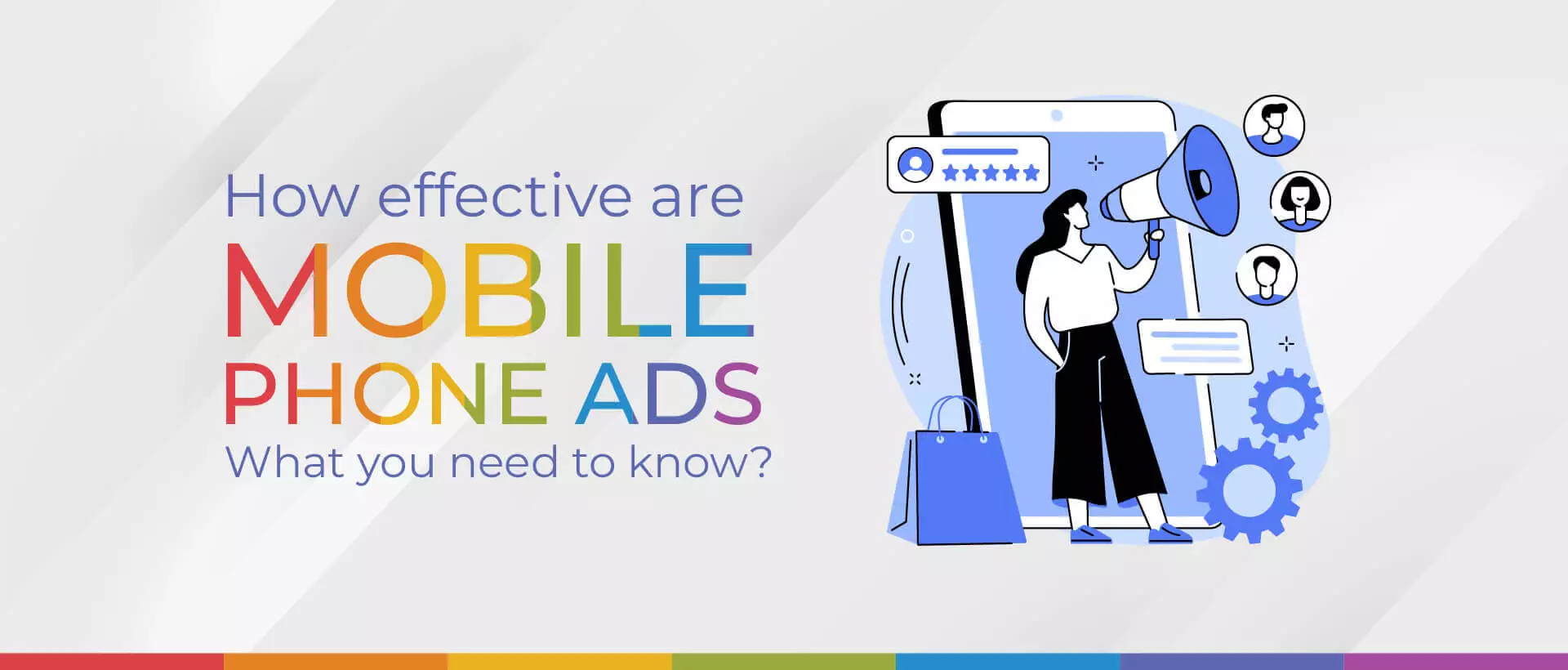
Mobile phone advertisements are product promotional offers shown to mobile phone or tablet users. Smartphones have location-based technology that advertisers can make use of and precisely target specific groups of mobile phone users based on their location, behaviour, search history, etc. Via mobile phone advertising companies reach the right audience at the right time with the right content and promotions.
The Different Types of Mobile Ads
Banner ads, interstitial ads, mobile video ads, native mobile ads, mobile-rich media, and playable mobile ads are distinct types of mobile phone advertisements.
1. Banner ads are promotional banners for mobile devices.
2. Interstitial ads are full-screen banners that users can dismiss with a swipe or a tap.
3. Mobile video ads are short video ads that appear before, after, or during an action within the app.
4. Native mobile ads mimic the style of the surrounding content so as not to interrupt the user experience.
5. Mobile-rich media are banner ads that include images and videos together.
6. Playable mobile ads are short demo versions that mobile users can try out. They are used to promote mobile games.
Today, people spend most of their time on their mobile phones or smartphones and not on their desktops or laptops. This is why mobile phone advertising has such a significant impact on consumer purchasing behaviour.
Reasons why mobile advertising is effective
Below are the main reasons why mobile advertising is effective:
Regardless of what they are doing or where they are, people will always keep their mobile phones with them or continue to use them even when they are busy. Irrespective of the location, one person can be online because of the broad network coverage provided by internet service providers. Therefore, mobile ads reach customers irrespective of their current location. The word of mouth from a target customer is free advertising for the advertiser.
Compared to a desktop or a laptop, 80% of the time is spent on mobile devices. There is no other medium as good as mobile phones to deliver the advertisement directly to target customers or other mobile phone users.
When an advertiser is running short of budget, the advertiser can choose mobile phone advertising rather than going for traditional ways of advertising such as television and print media.
By sending personalised and targeted advertising messages, brands can achieve greater customer intimacy. Personalised advertising will be more effective in increasing enthusiasm and user engagement and increasing the conversation between advertisers and customers.
Mobile phone advertising delivers highly interactive advertisements with user-friendly formats and content. When there are question-and-answer sessions or quizzes given within an ad format, it is more likely that customers will remember the ad and brand for a long time. By having such interactive sessions with customers, brands will also get input and can improve their ads.
Using relevant details like location information, demographics, age group, mobility, shopping habits, online pages visited, spending habits, preferences, and history, advertisers could easily segregate customers. By using IP addresses and cookies, customer information can be tracked easily. Data may not be accurate from a desktop or laptop because of multiple users, but mobile phones are mostly used privately by customers.
Mobile phone advertising is immensely beneficial to brands due to the extensive accessibility of customer information, its cost-effectiveness, and most importantly, personalization. With all these amazing advantages, mobile ads will stay for longer periods and will rule the world of digital marketing for some time.